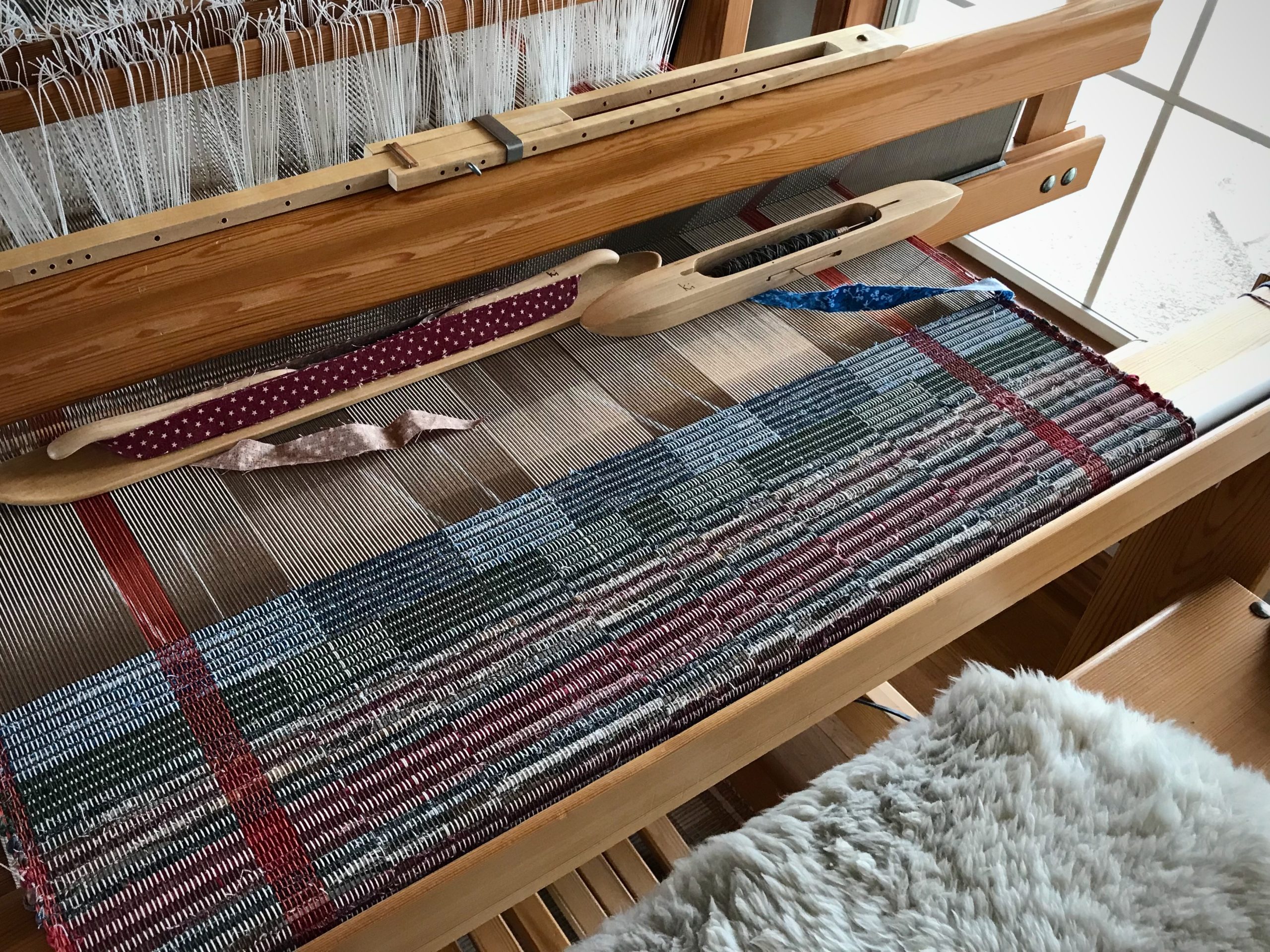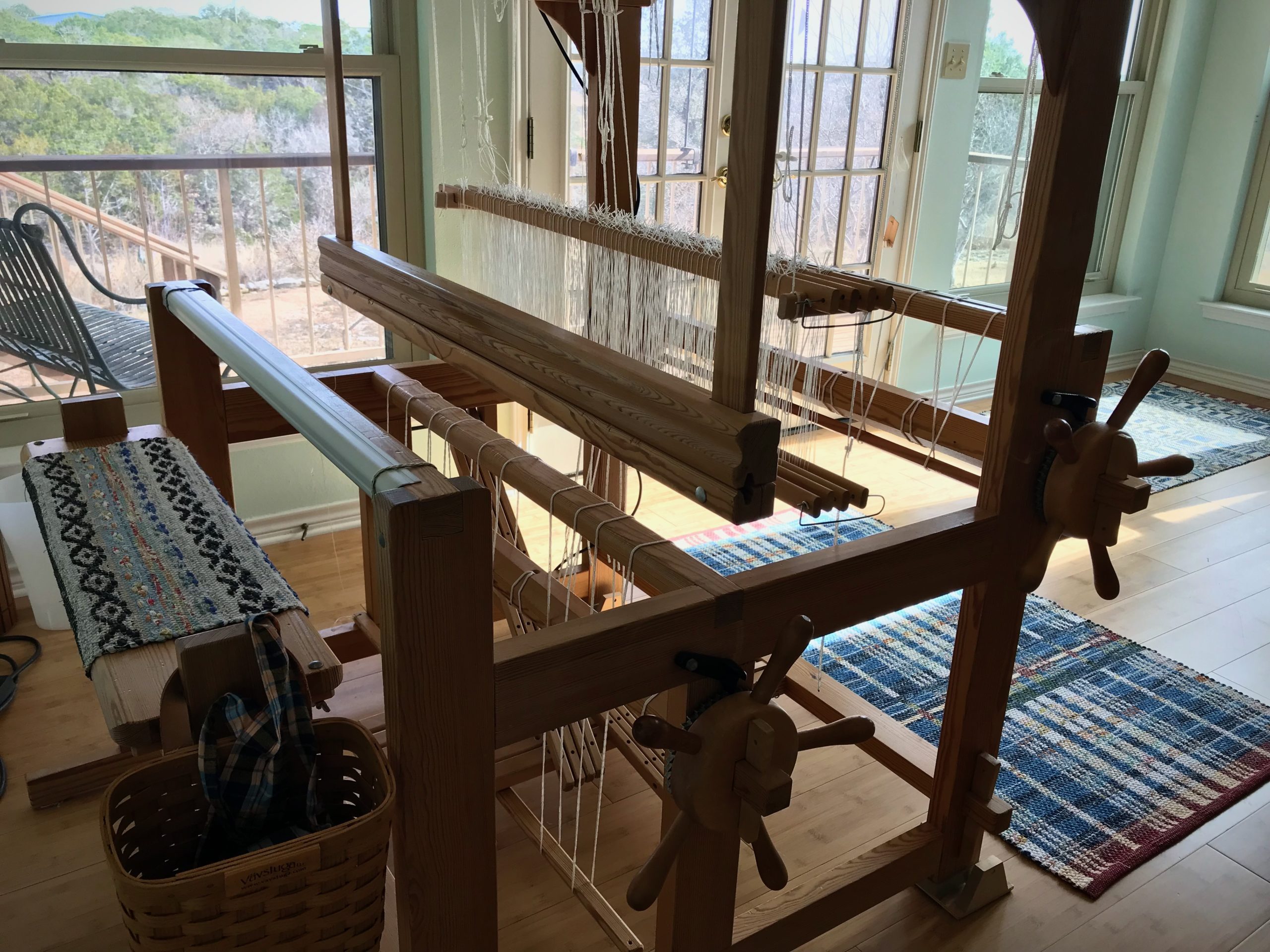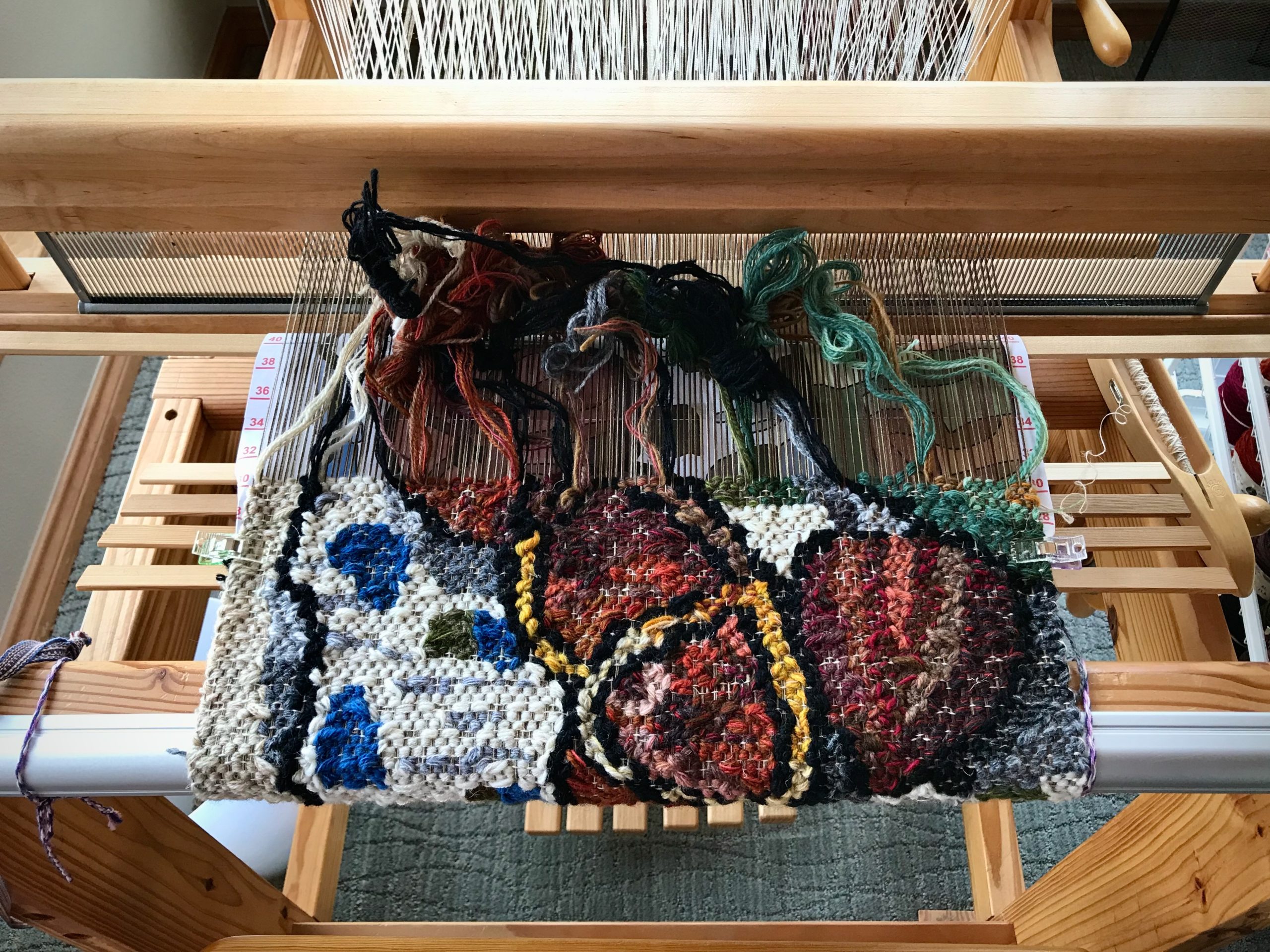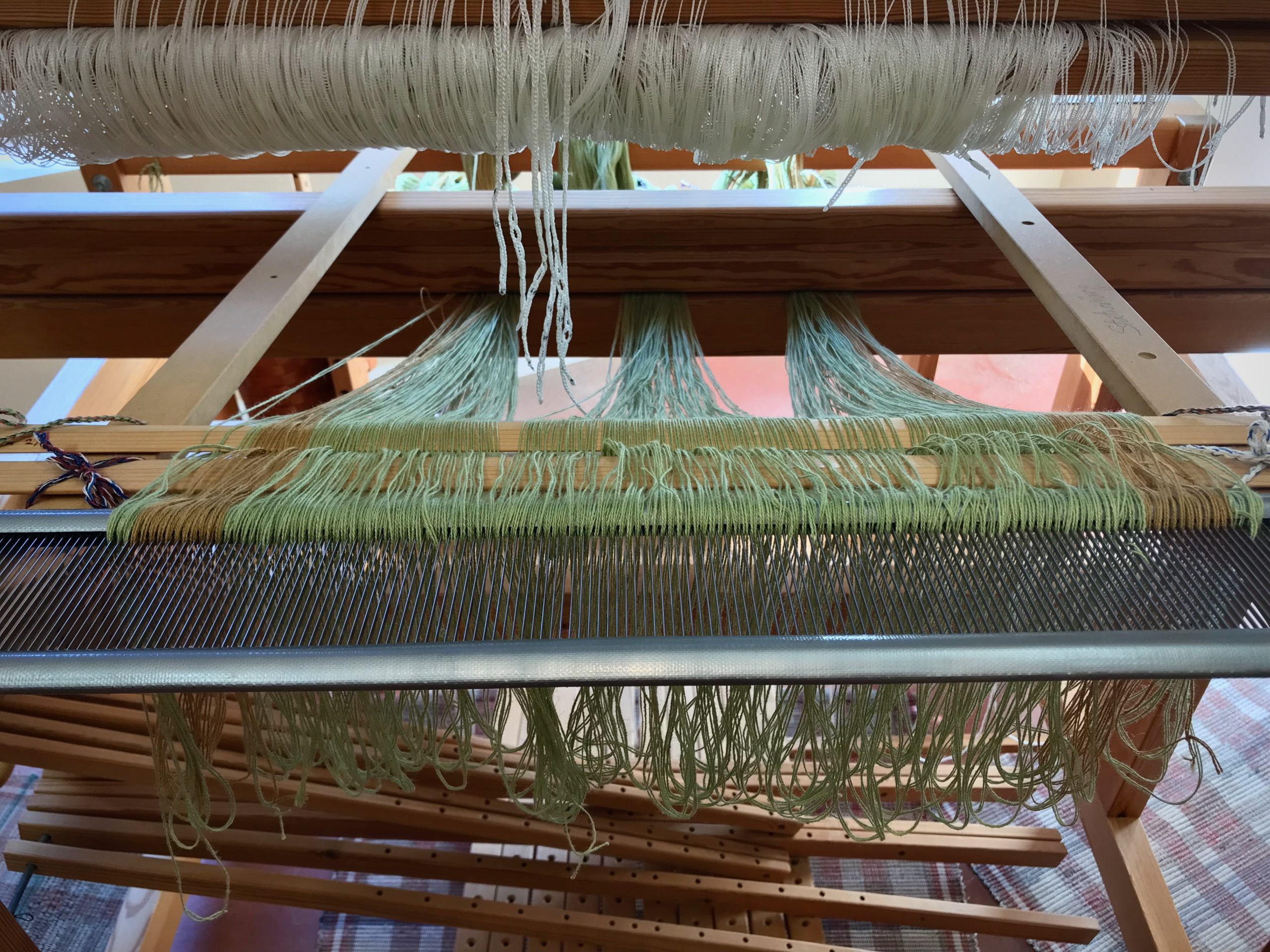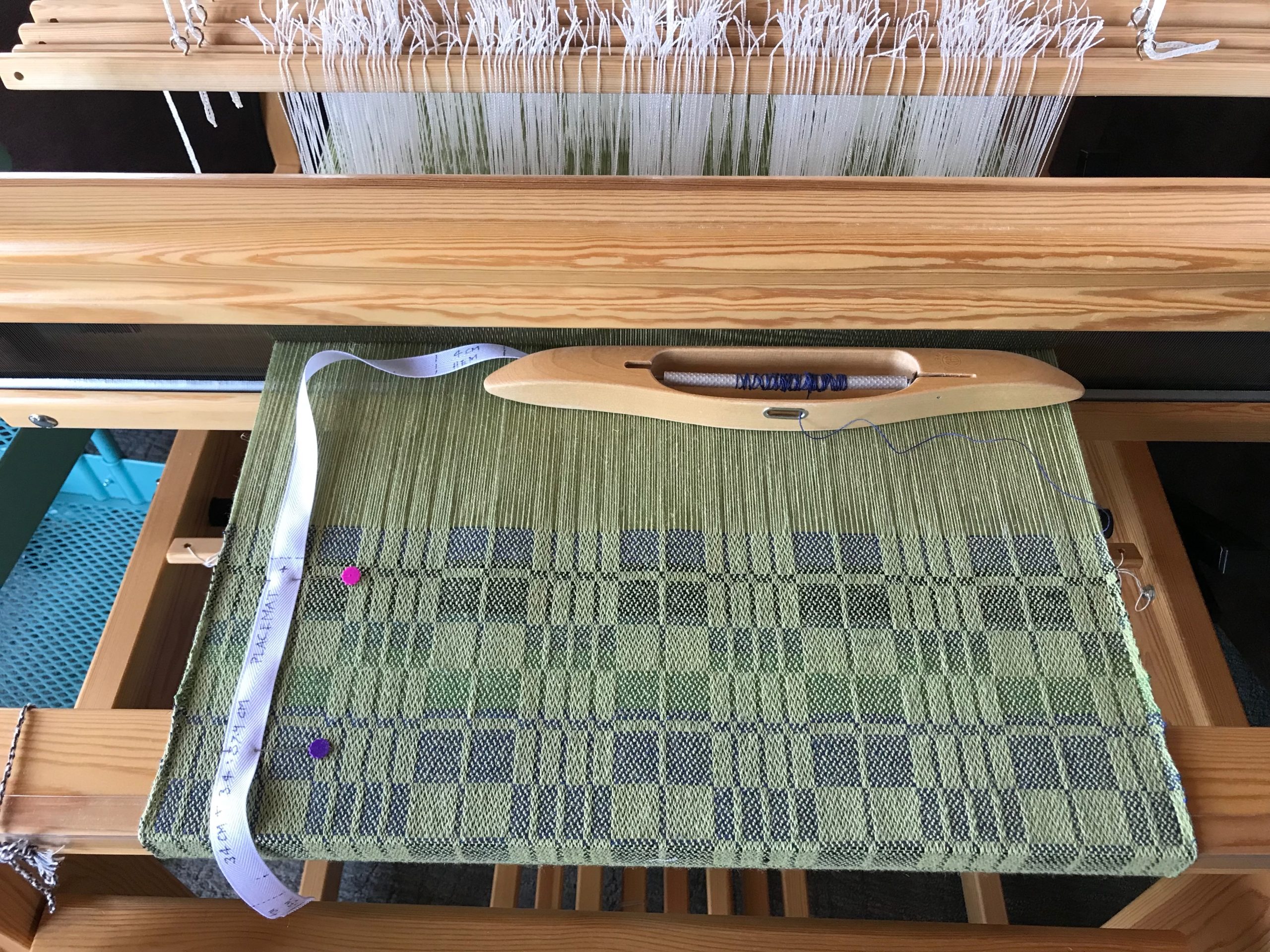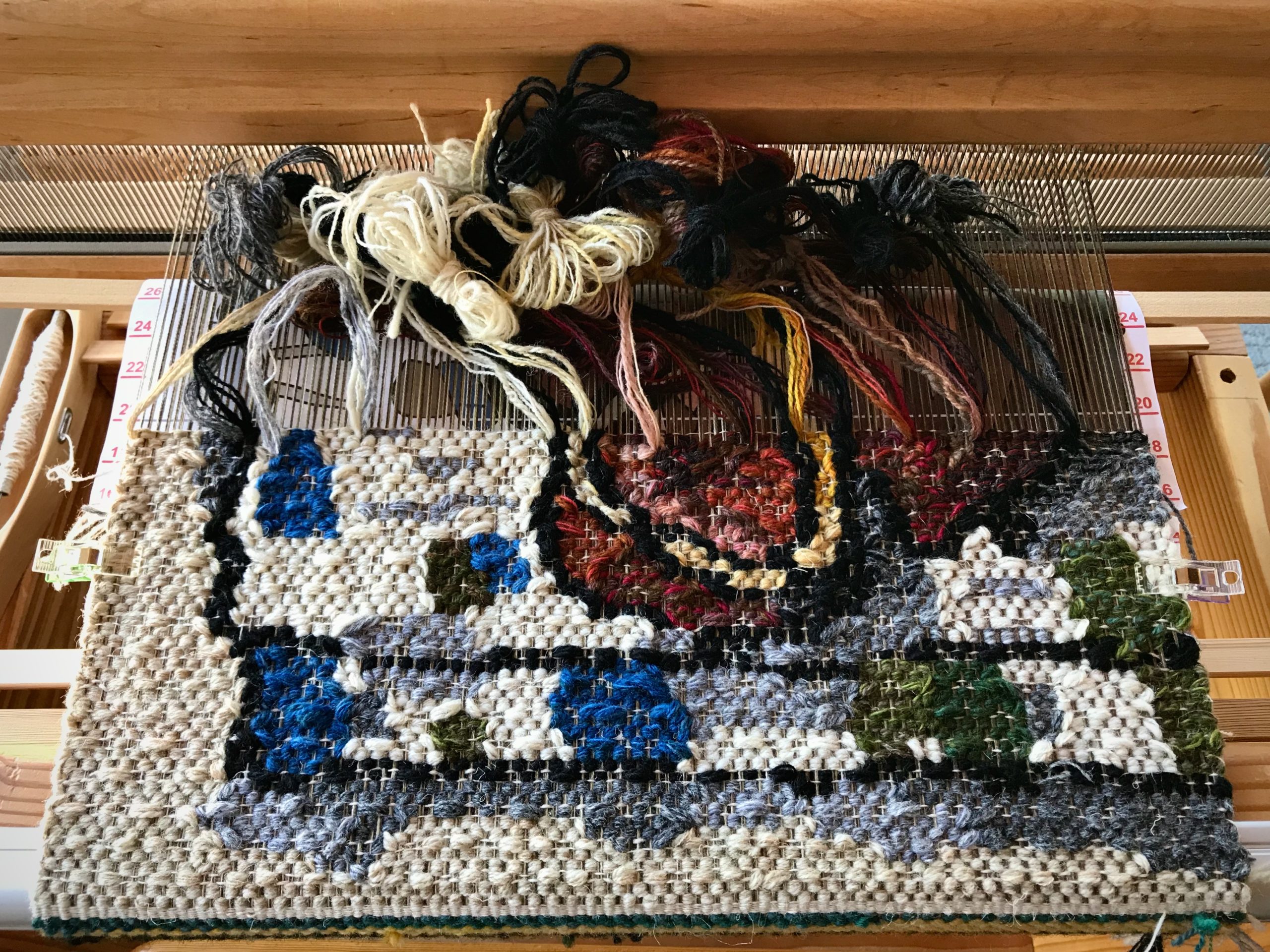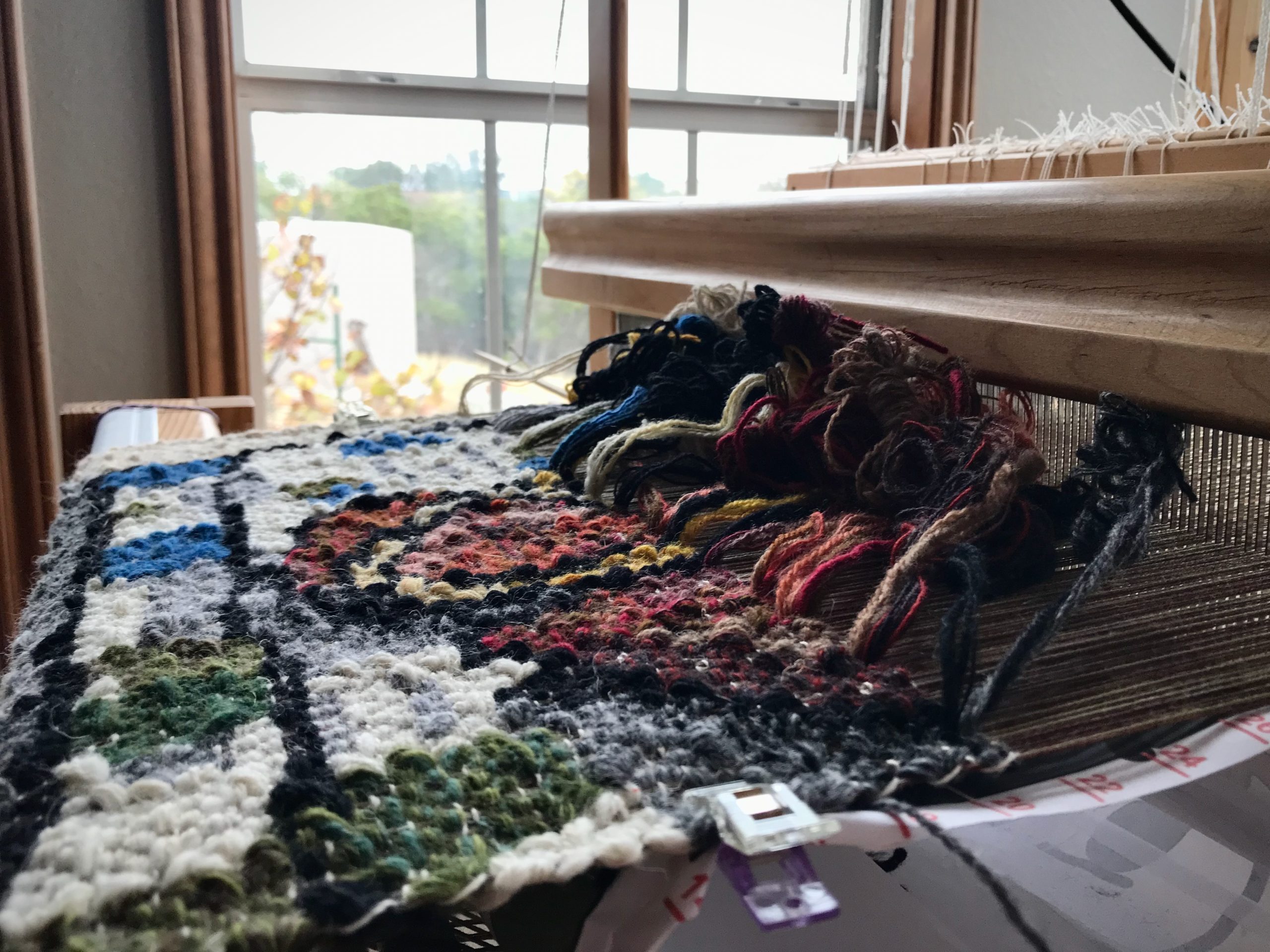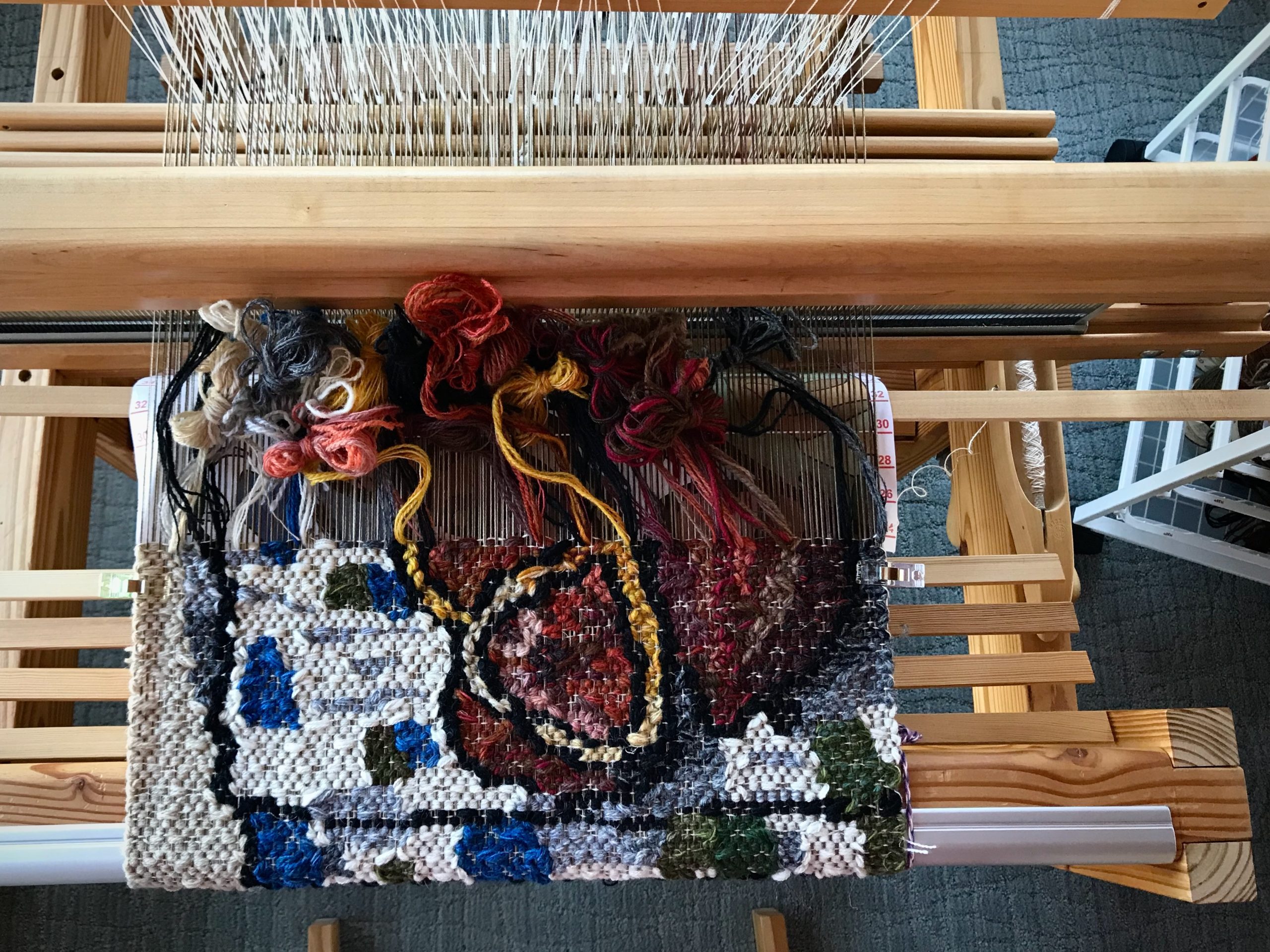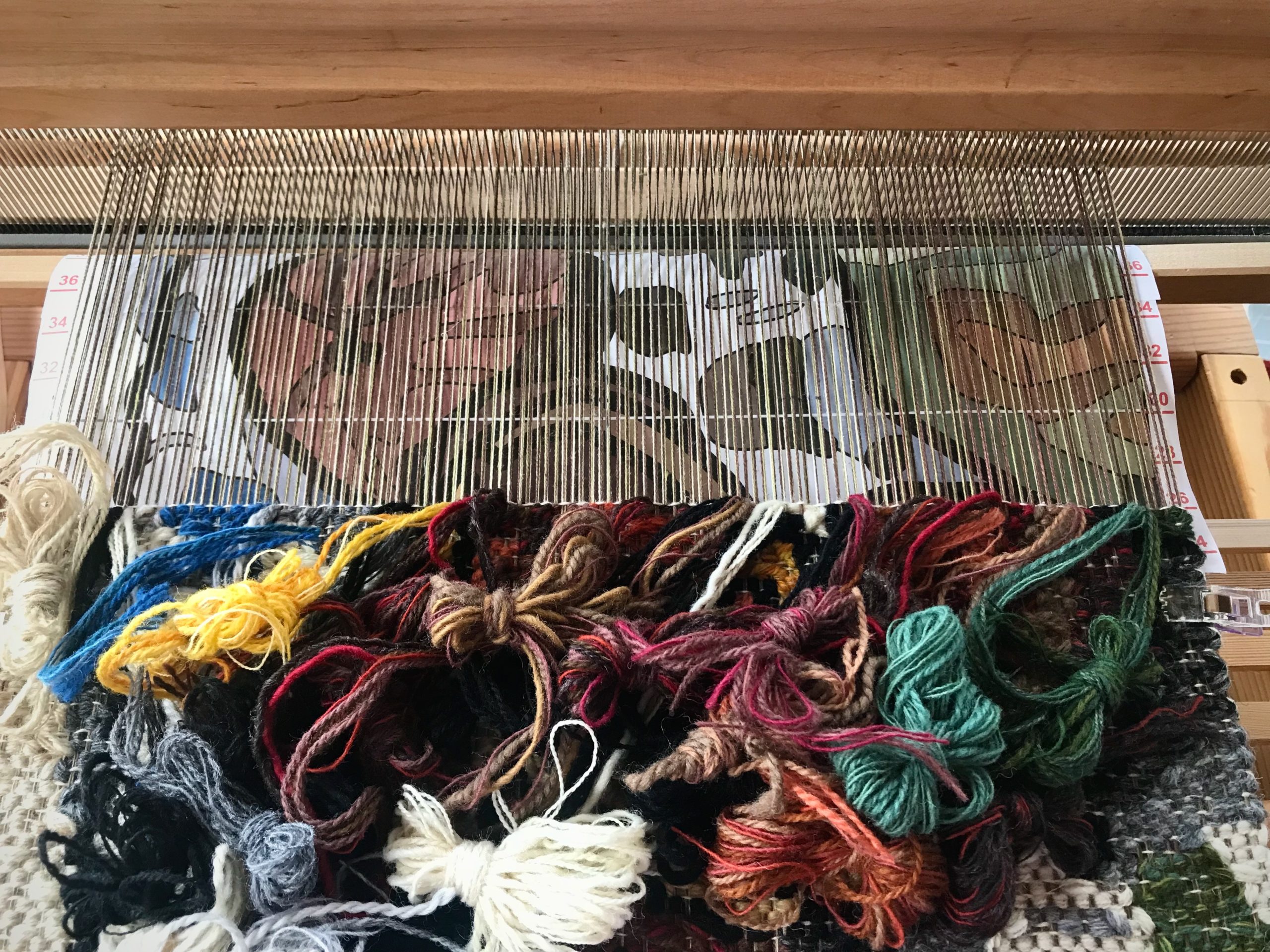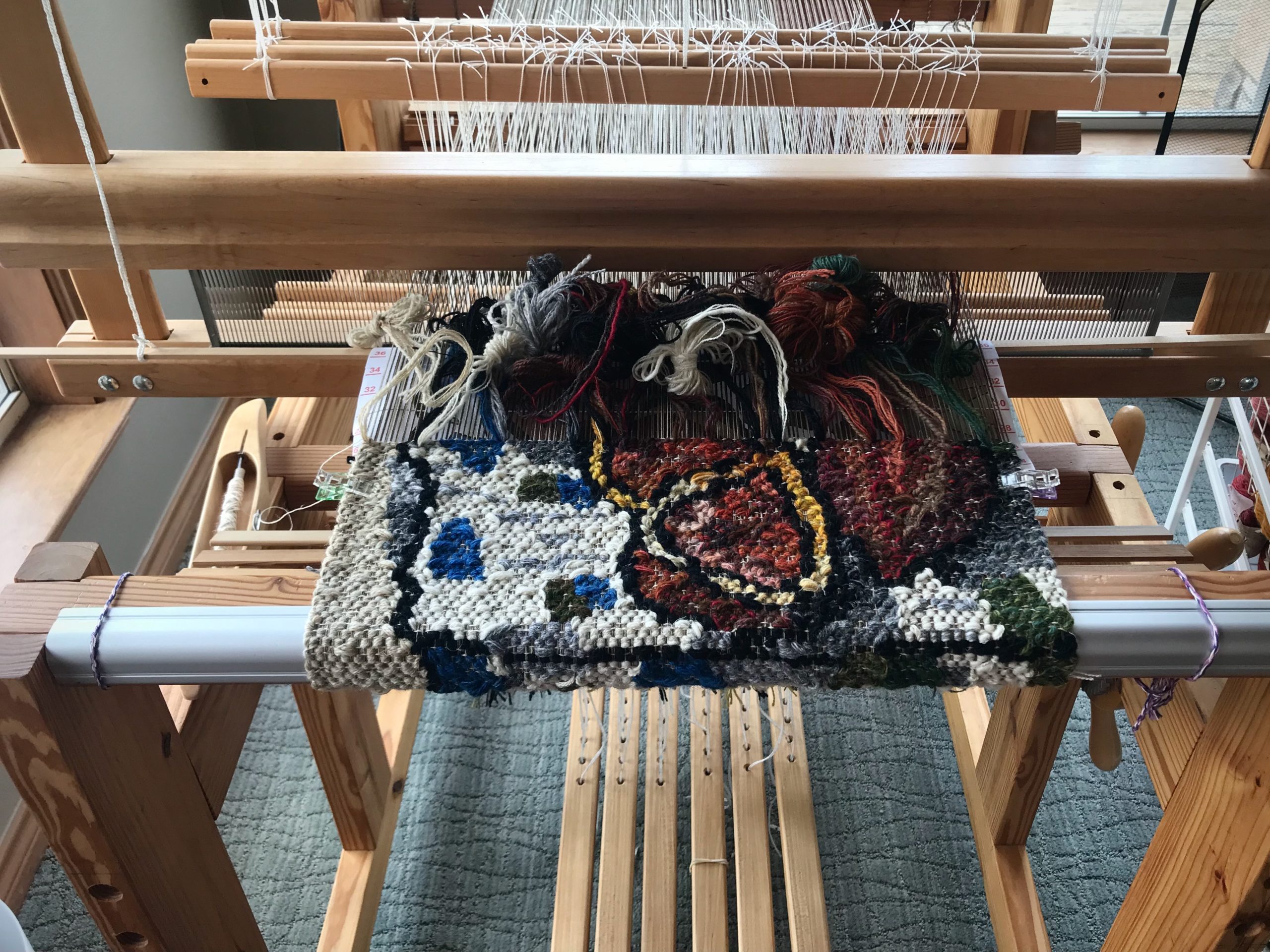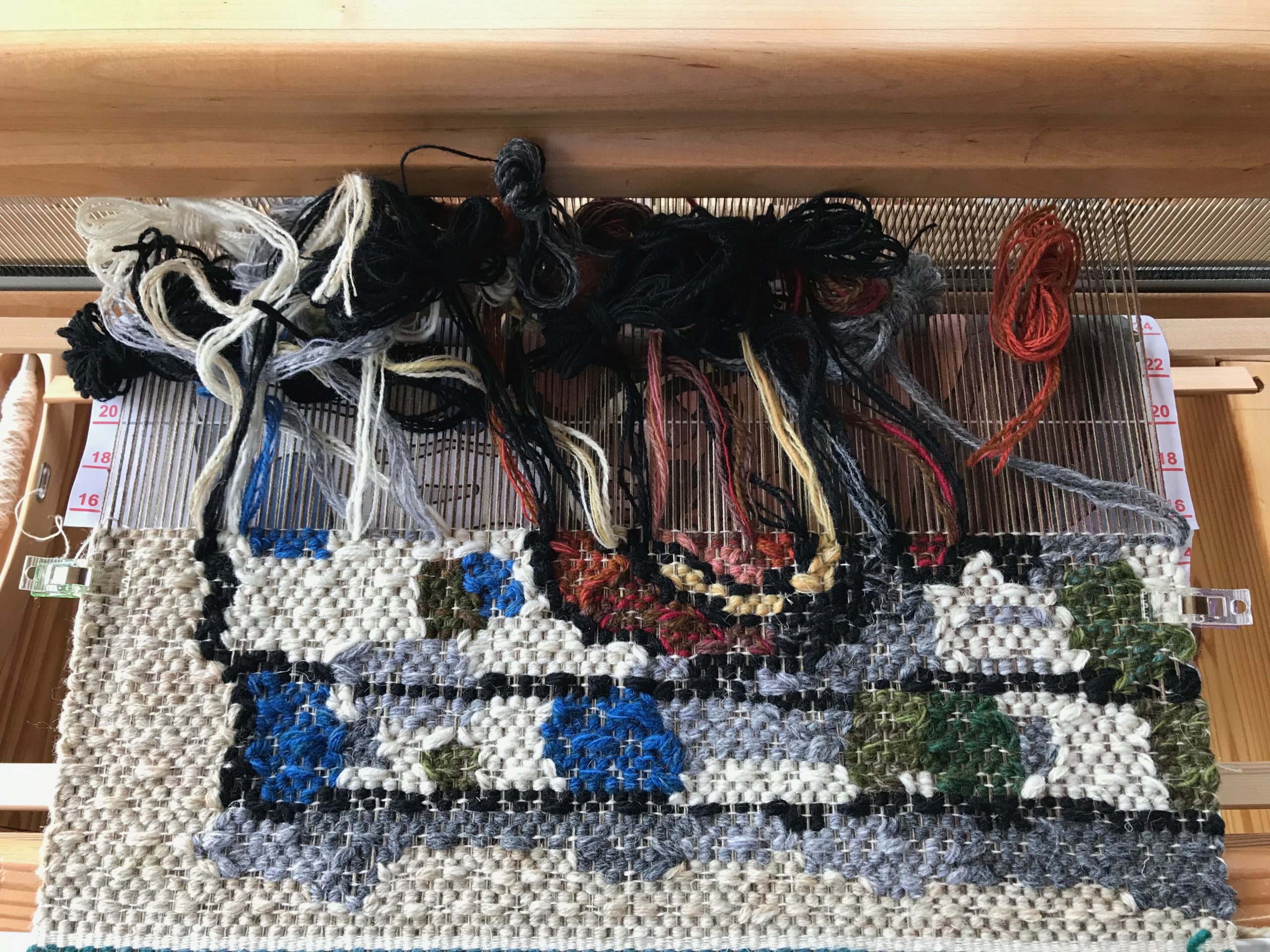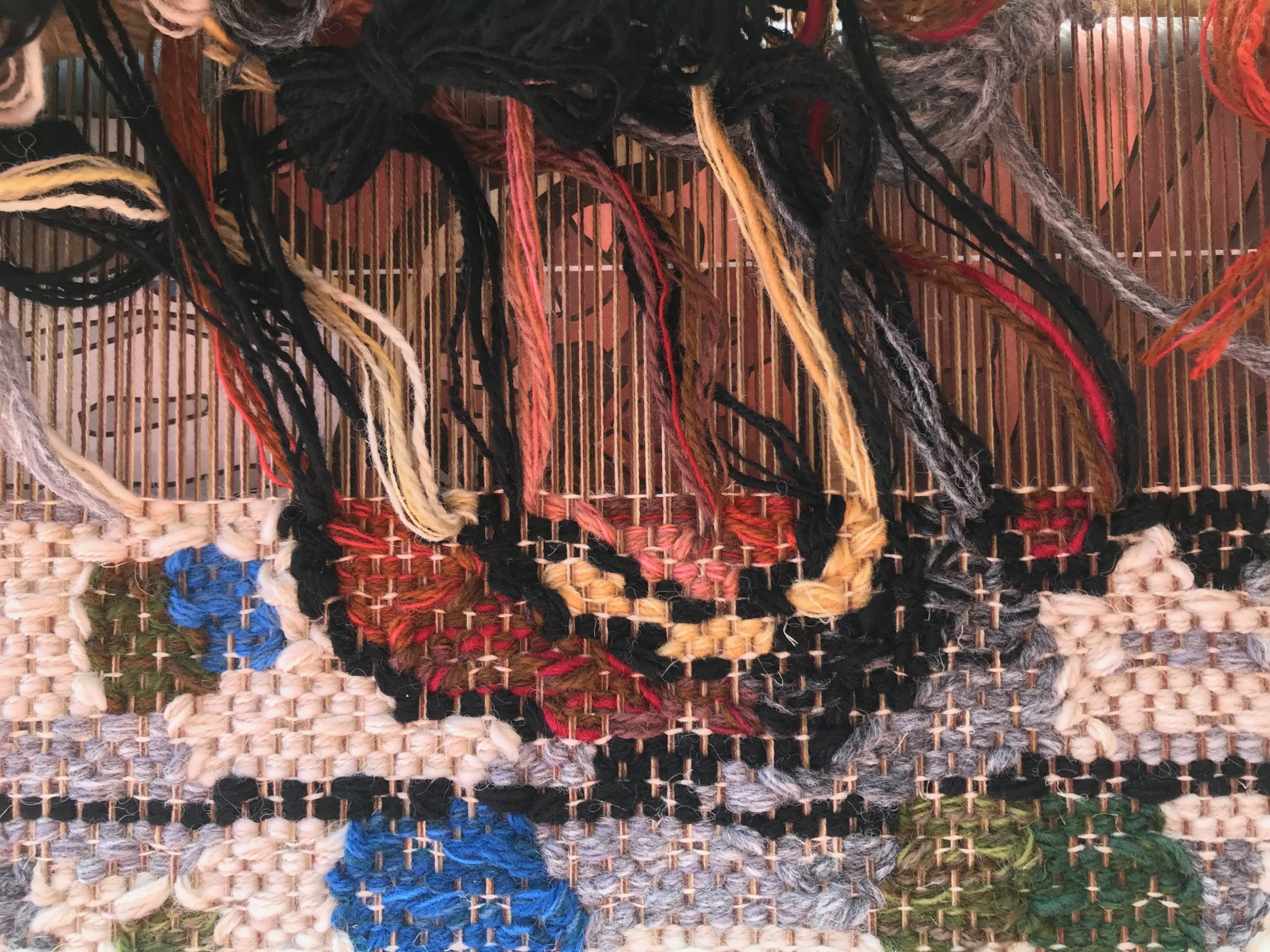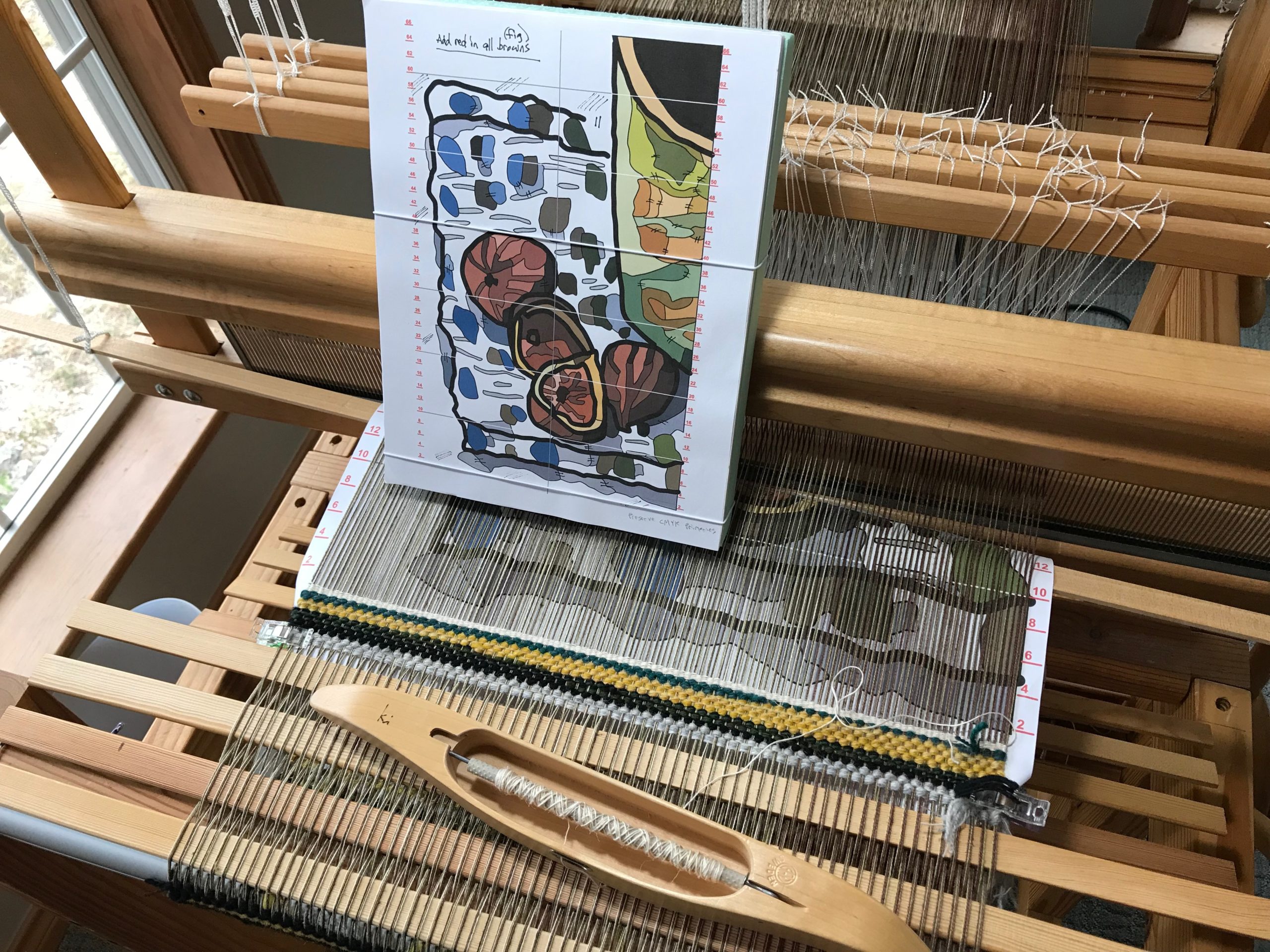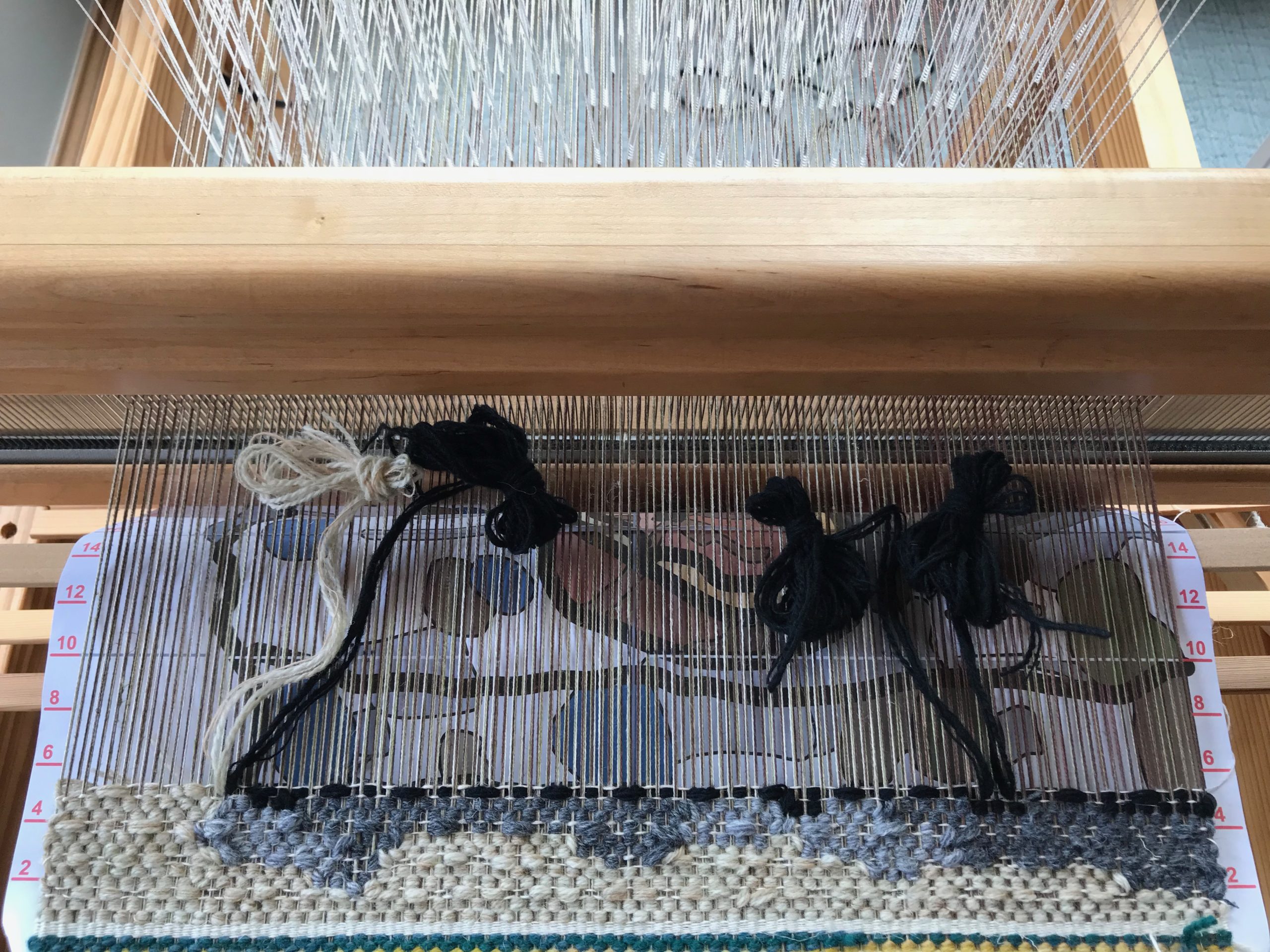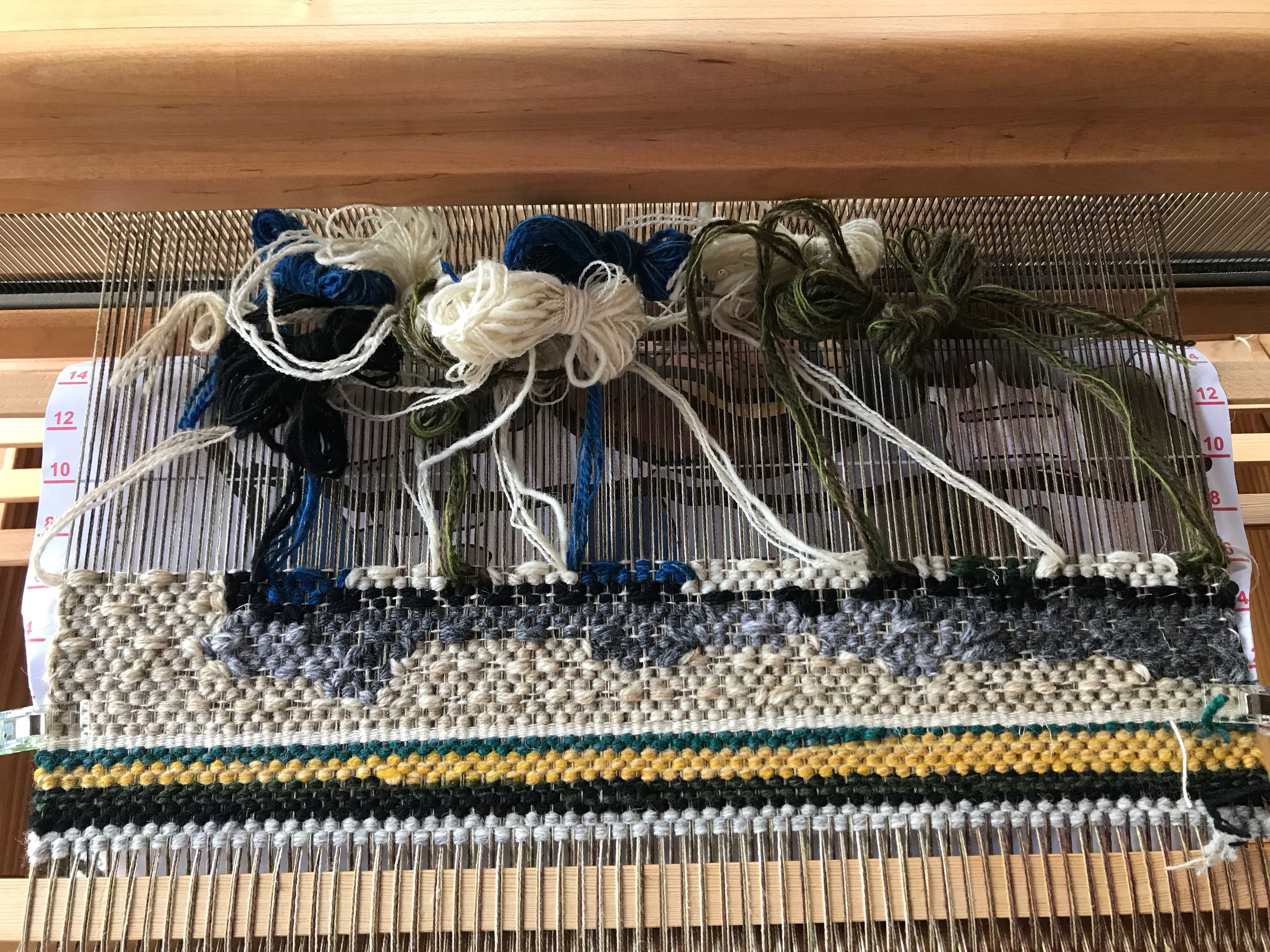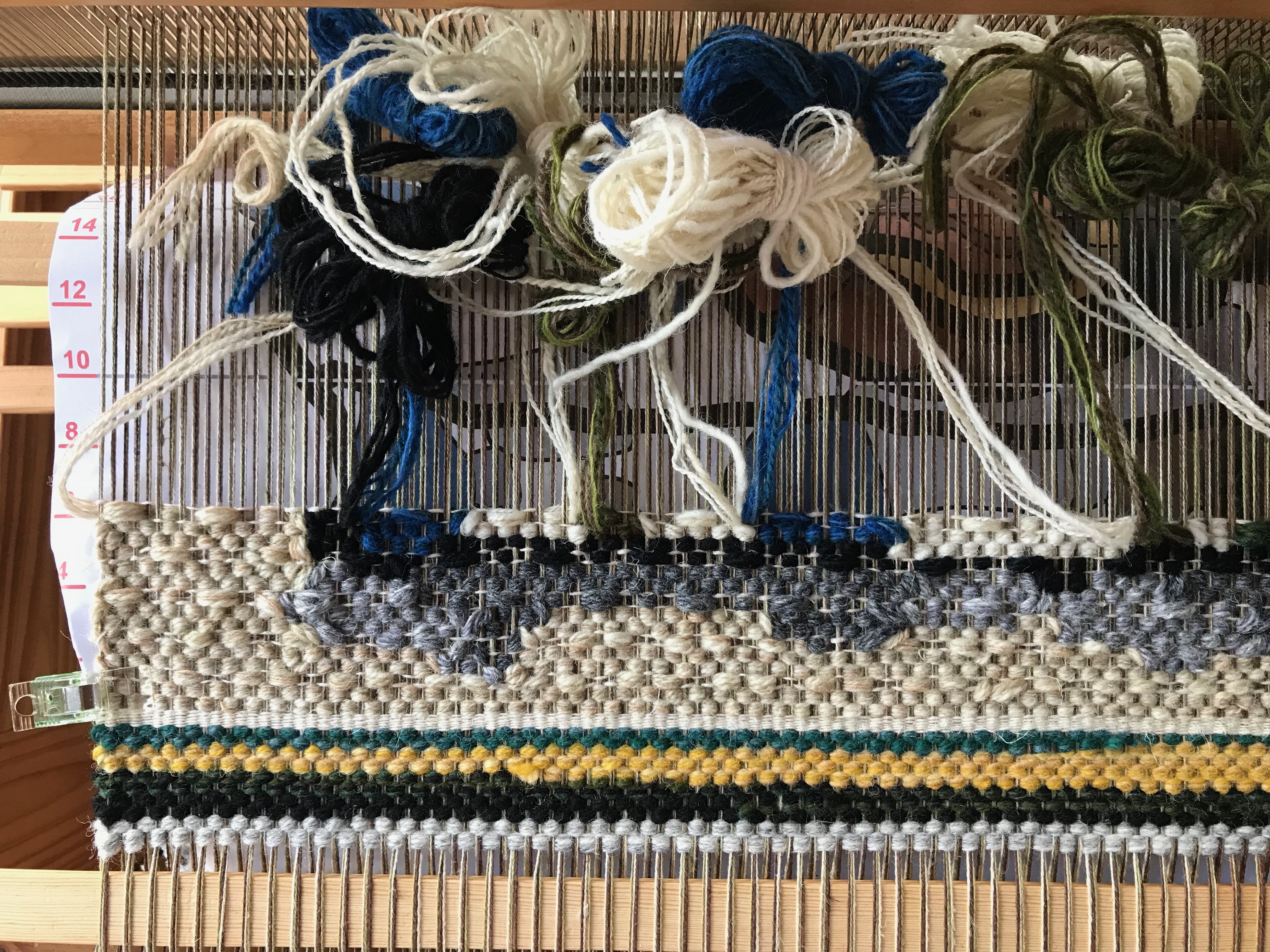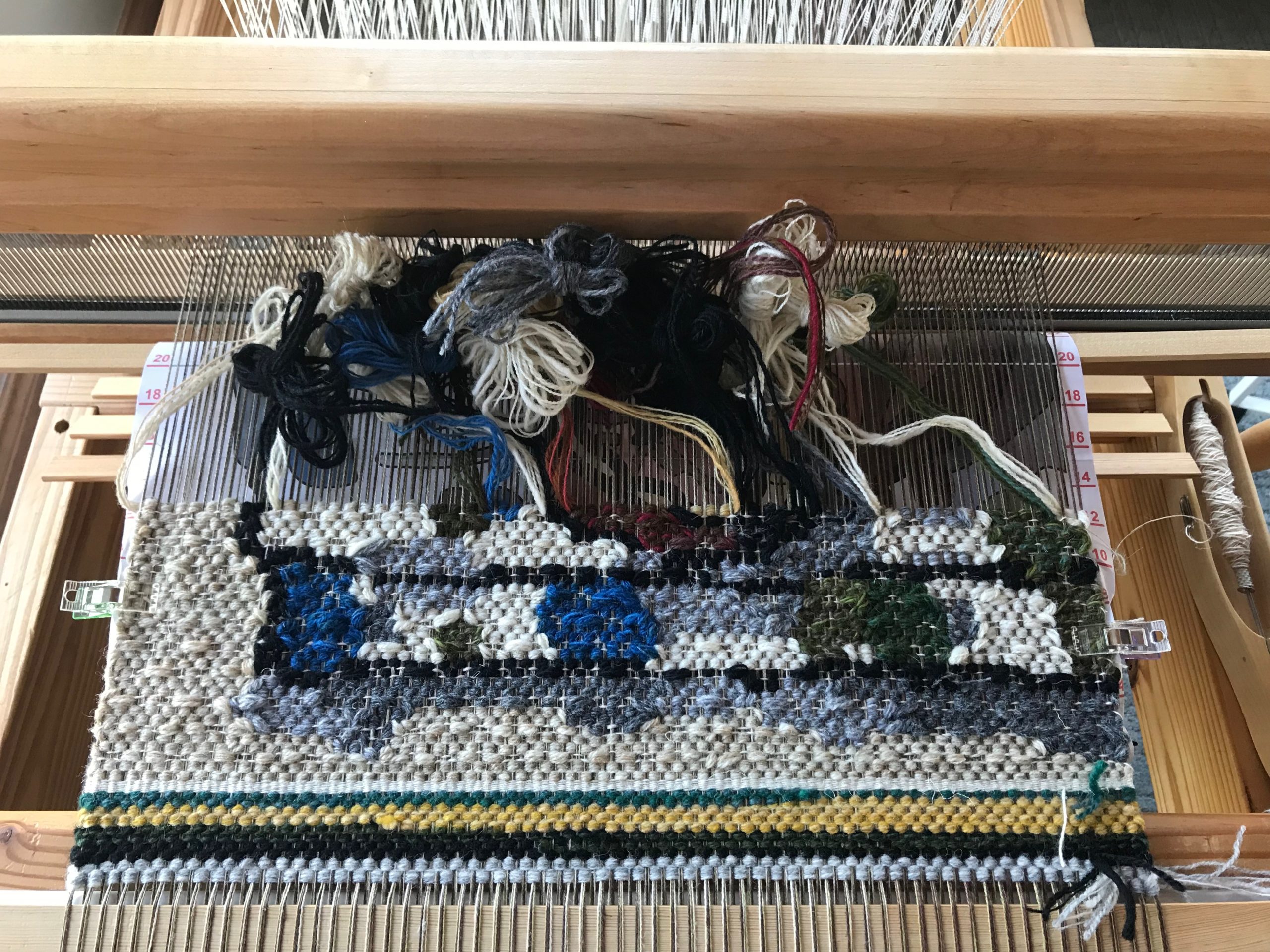I don’t want to tell you how many different colors I have of wool yarn. Most of it is 6/2 Tuna and 6/1 Fårö, but I have a good collection of other wool yarns, too. If it’s wool, I include it in my tapestry weaving. I have all of it arranged according to a 5-step value scale.
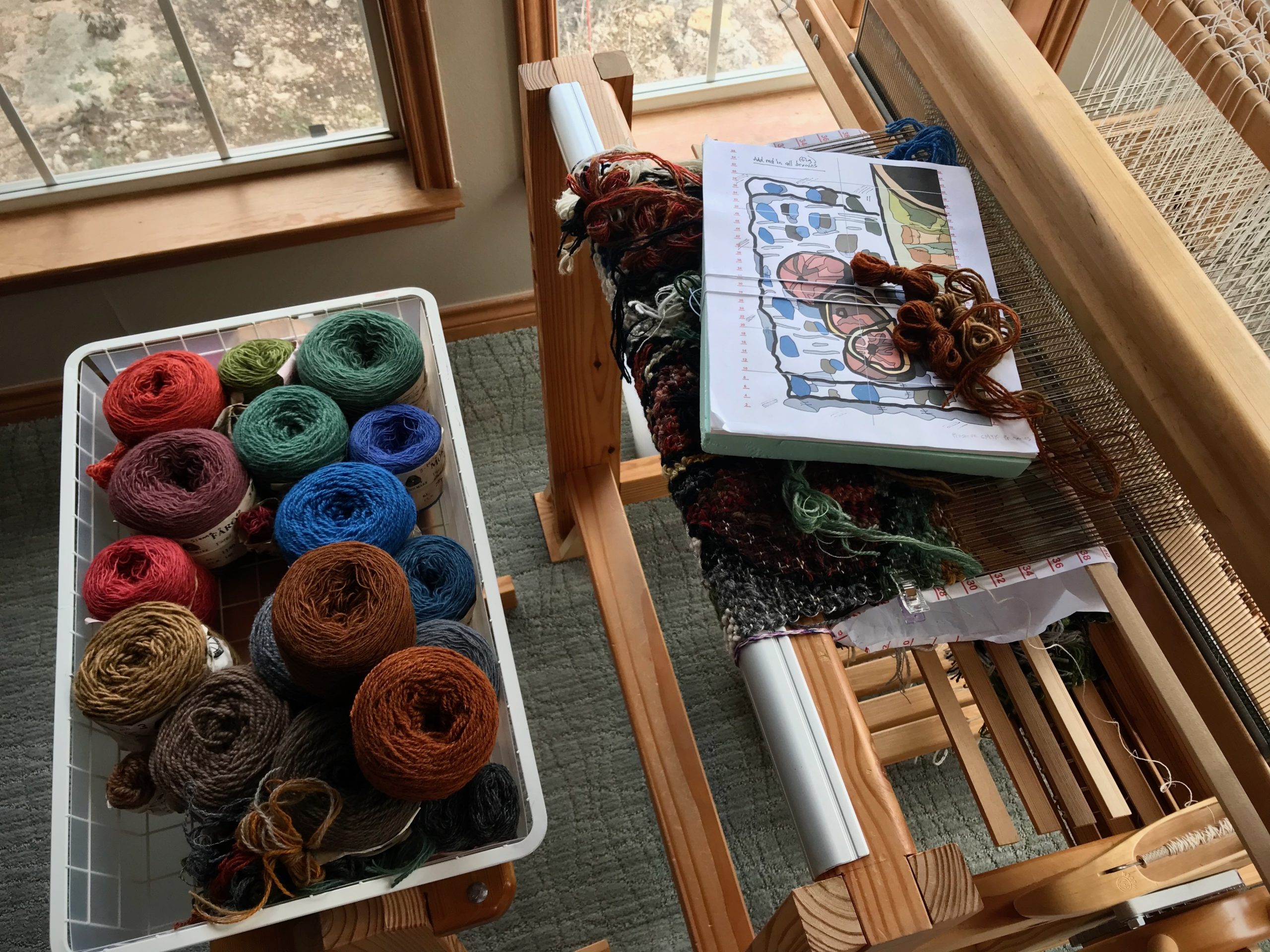
If I combine the colors of wool just right, I can make the exact color I need for a tapestry detail. This is the challenge on which I thrive. There are never enough colors. Or, so it seems. The truth is, I have more than enough color options. Besides, for tapestry, the exact hue of a color is not nearly as important as the value of a color in relation to the colors around it.
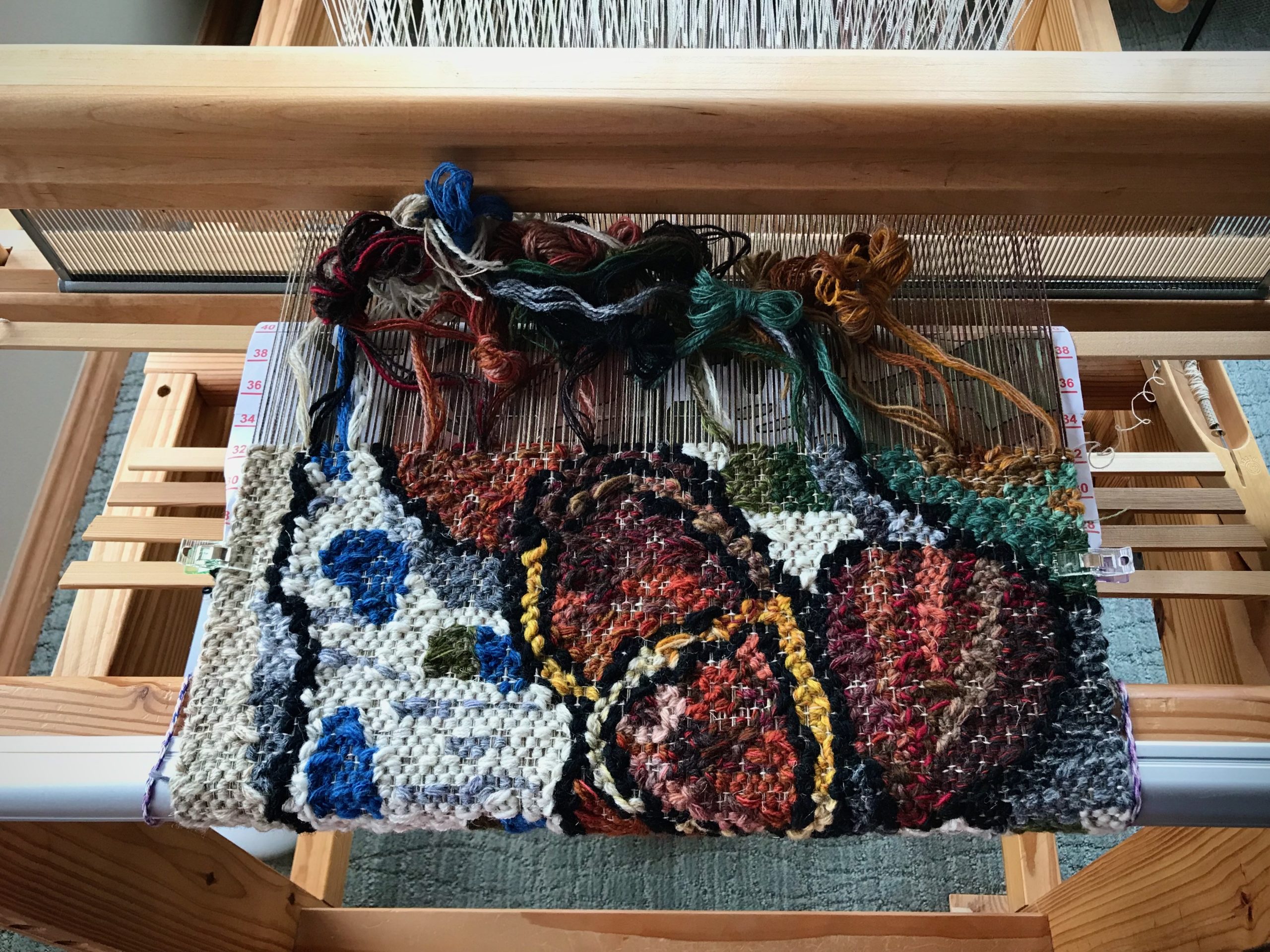
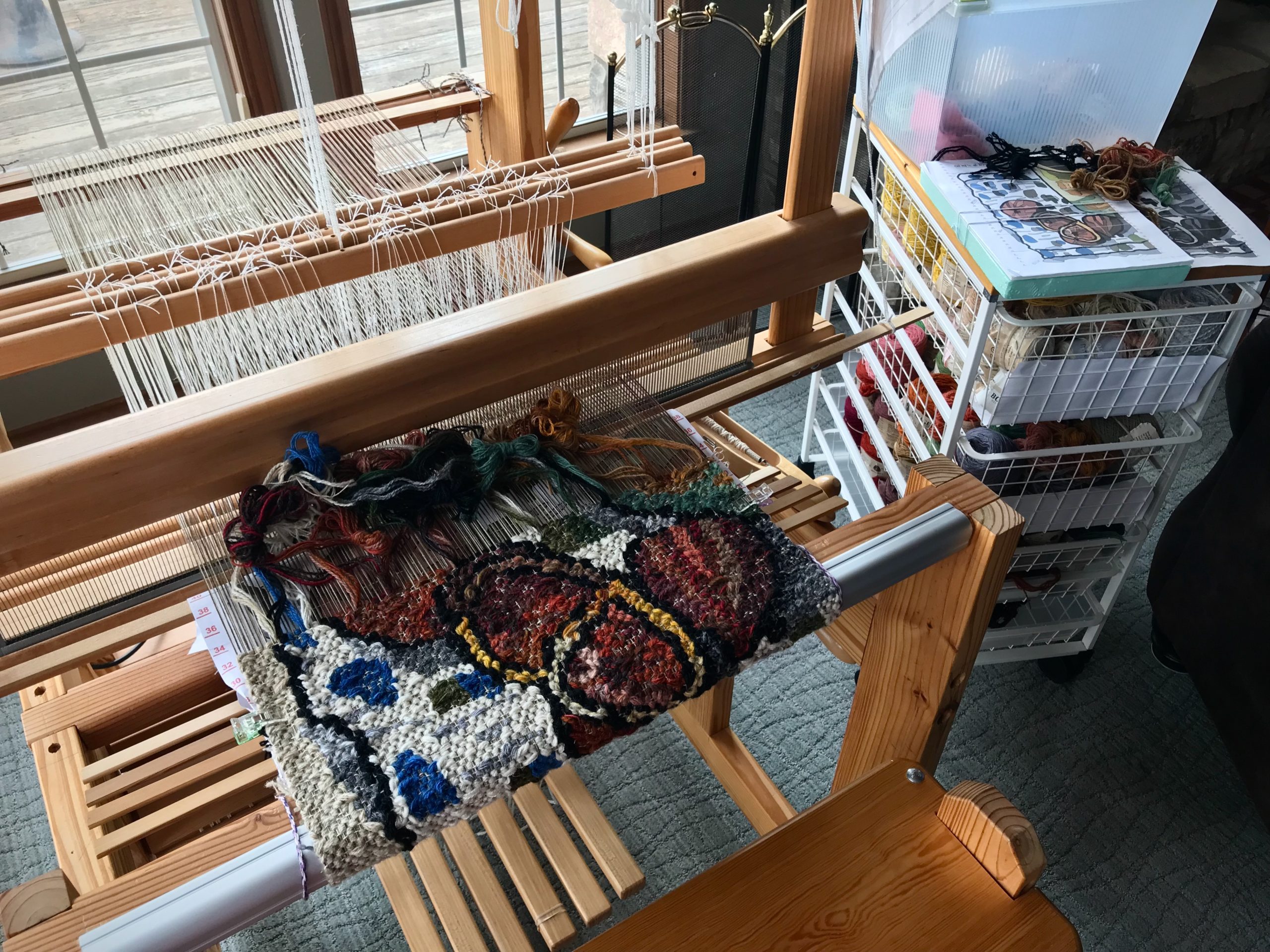
The Most High God, Creator of heaven and earth, Creator of color, makes himself known. Take a look outside. Everywhere we look there is more color than we know how to express. So, in our humble attempts to make yarn butterflies in exact colors, we are showing that we are indeed made in our Creator’s image.
May you see all the color around you.
Your friend,
Karen

